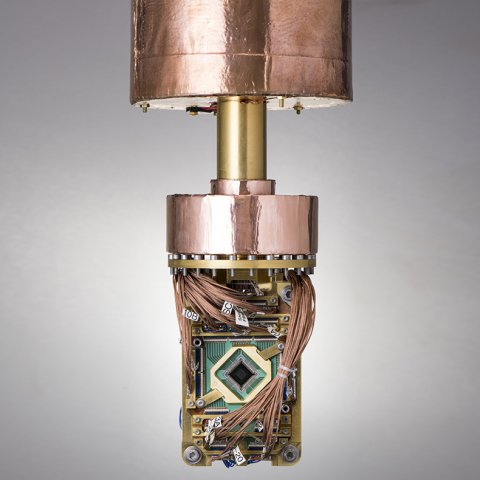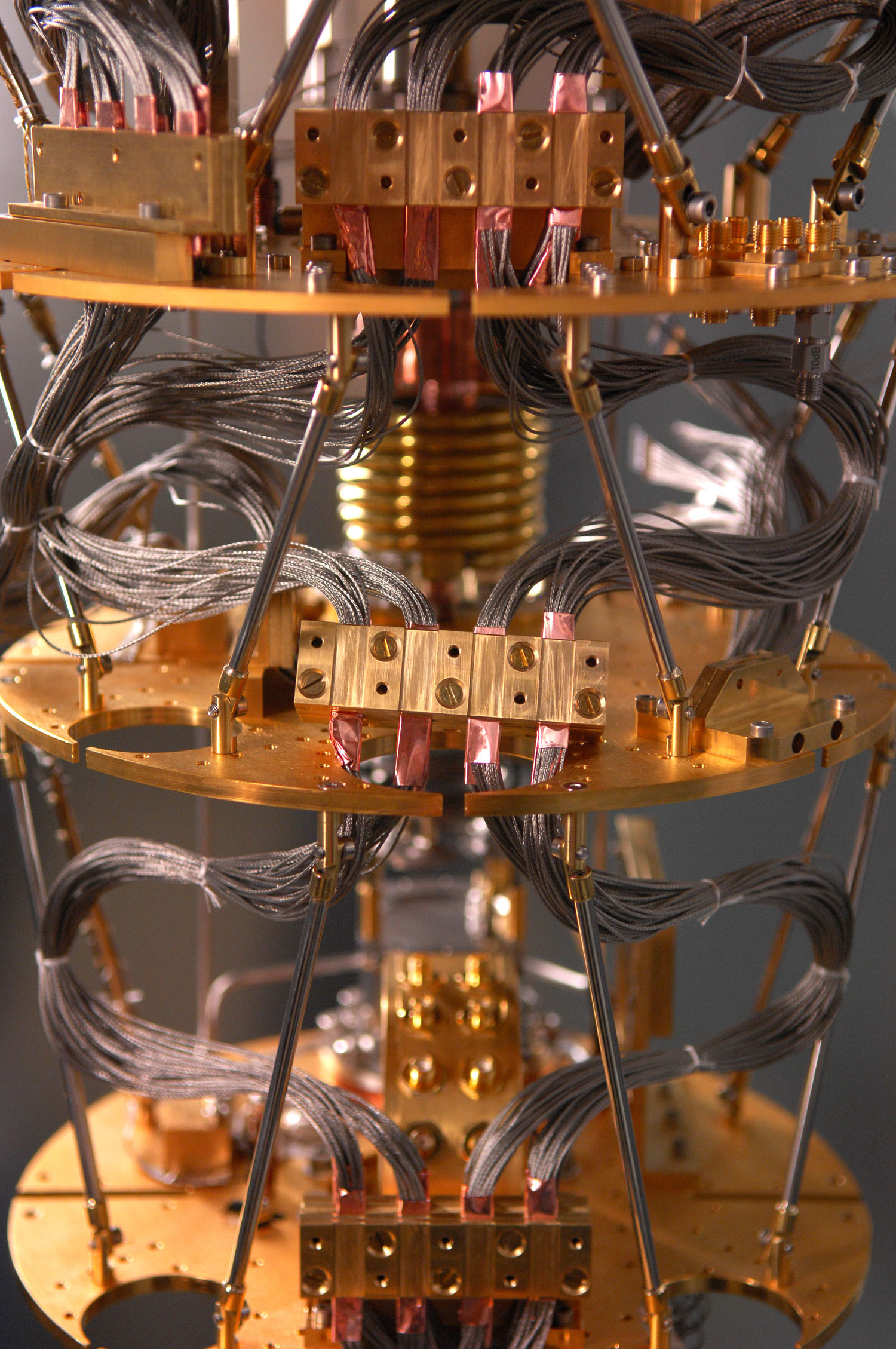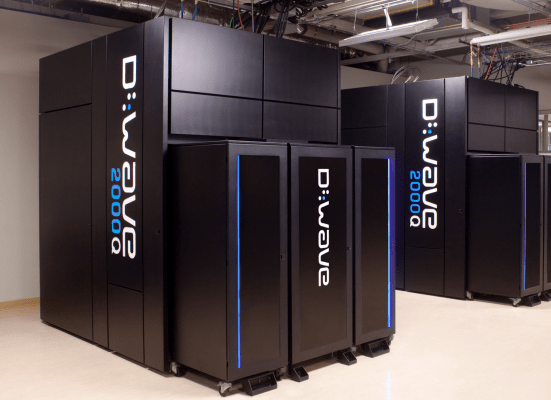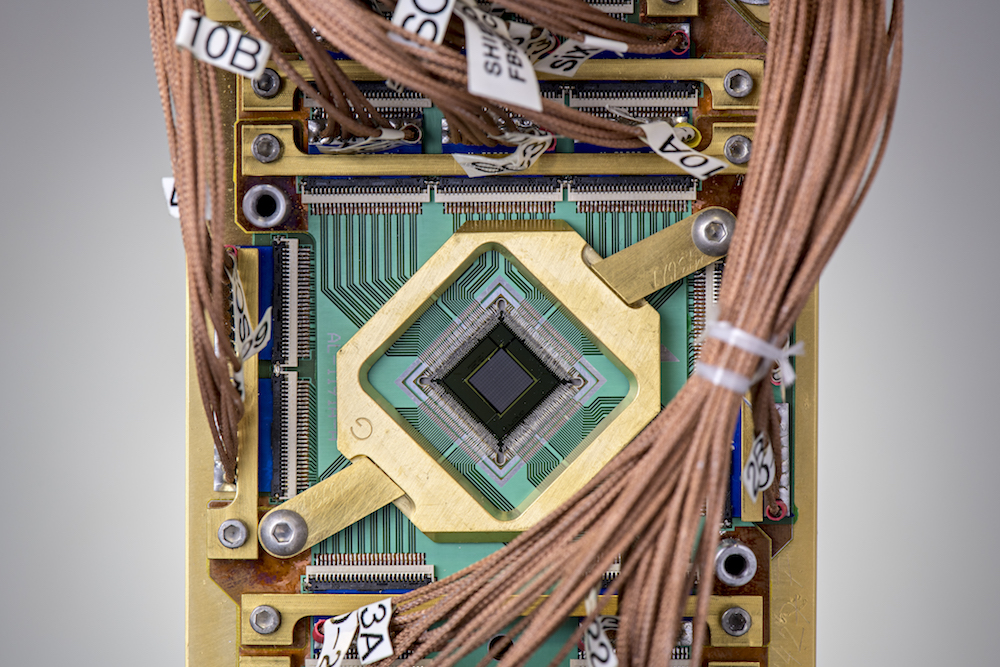Earlier this month, at the WebSummit conference in Lisbon, D-Wave and Volkswagen teamed up to manage a fleet of buses using a new system that, among other things, used D-Wave’s quantum technology to help generate the most efficient routes. While D-Wave’s 2000Q only played a small part in this process, it’s nevertheless a sign that quantum computing is slowly getting ready for production use and that D-Wave’s approach, somewhat controversial in its early days, is paying off.
Unlike other players in the quantum computing market, D-Wave always bet on quantum annealing as its core technology. This technology lends itself perfectly to optimization problems like the kind of routing problem the company tackled with VW, as well as sampling problems, which, in the context of quantum computing, are useful for improving machine learning models, for example. Depending on their complexity, some of these problems are nearly impossible to solve with classical computers (at least in a reasonable time).
Grossly simplified, with quantum annealing, you are building a system that almost naturally optimizes itself for the lowest energy state, which then represents the solution to your problem.
 Microsoft, IBM, Rigetti and others are mostly focused on building gate-model quantum computers and they are starting to see results (with the exception of Microsoft, which doesn’t have a working computer just yet and is hence betting on partnerships for the time being). But this is also a far more complex problem. And while you can’t really compare these technologies qubit to qubit, it’s telling that D-Wave’s latest machines, the Advantage, will feature 5,000 qubits — while the state of the art among the gate-model proponents is just over 50. Scaling these machines up is hard, though, especially given that the industry is still trying to figure out how to manage the noise issues.
Microsoft, IBM, Rigetti and others are mostly focused on building gate-model quantum computers and they are starting to see results (with the exception of Microsoft, which doesn’t have a working computer just yet and is hence betting on partnerships for the time being). But this is also a far more complex problem. And while you can’t really compare these technologies qubit to qubit, it’s telling that D-Wave’s latest machines, the Advantage, will feature 5,000 qubits — while the state of the art among the gate-model proponents is just over 50. Scaling these machines up is hard, though, especially given that the industry is still trying to figure out how to manage the noise issues.
D-Wave remains the only major player that’s betting on annealing, but the company’s CEO Vern Brownell remains optimistic that this is the right approach. “We feel more strongly about our decision to do quantum annealing now that there are a few companies that actually have quantum computers that people can access,” he said in an interview earlier this month.
“We have customers, Volkswagen included, that have run problems against those other computers and seeing what they can actually do and it’s vastly different. Our capability is many orders of magnitude faster for most problems than what you can do with other quantum computers. And that is because of the choice of quantum annealing. And that is because quantum healing is more robust to errors.” Error correction, he argues, remains the fundamental problem, and will hamper the performance of these systems for the foreseeable future. “And in order to move into the enterprise or any kind of practical application, that error correction needs to be wrestled with,” he noted.
Recently, D-Wave installed its first machine in Europe, at the supercomputing center in Jülich, Germany. As Brownell noted, the researchers there have access to technologies from various vendors, including IBM and Google, and on their technology readiness scale, they rated D-Wave’s system an eight out of ten, with everybody else being rated five or below.
“I think we are more pleased with our competitive position now we’re no longer competing with just theoretical devices. The notion of what you can build if you’re going to build a gate-model, fully architected computer — now pretty much everyone knows that’s 10 years or 20 years away,” Brownell said.
The advantage of those gate-model quantum computers is their versatility, though, since they can effectively be used for solving a far wider range of problems. That’s changing, though, Brownell argues, citing recent research that shows that one can, indeed, build a universal quantum annealer. Google actually has a patent for a system like this, though its research group has moved into a different direction, as far as I can tell. Brownell says that’s something D-Wave is looking into, too.
 “It has become known in the past couple of years that you can build a universal quantum anneal as well — and we have a design for universal quantum annealer — and mathematically, it’s been proven that a universal quantum annealer is equivalent to a gate-model universal system,” he said. “And we believe that even those applications which are more natively suited to a universal model, we will be able to deliver that well before the folks with the gate model-computer, with the current designs.”
“It has become known in the past couple of years that you can build a universal quantum anneal as well — and we have a design for universal quantum annealer — and mathematically, it’s been proven that a universal quantum annealer is equivalent to a gate-model universal system,” he said. “And we believe that even those applications which are more natively suited to a universal model, we will be able to deliver that well before the folks with the gate model-computer, with the current designs.”
With the current systems, D-Wave has long been working with a number of companies that are experimenting with its technology. For Volkswagen, traffic optimization was an obvious choice (and represents somewhat of a sweet spot for D-Wave’s technology, too). The company trialed the overall algorithm with data from taxis in Bejing and Barcelona, to see if it can optimize the individual route of the taxis and do that in a way that helps minimize traffic congestion in general. Now, in early November, the team took this system to Lisbon to test it in the real world, making it the first pilot project for traffic optimization using a quantum computer. The Volkswagen system ingests data from the busses and the overall traffic flow in the city and then uses the recently launched D-Wave hybrid system, for which Volkswagen was a launch partner, to optimize the route. All of this, Brownell stressed, happens in real-time, which is something most current quantum systems can’t do.
“Our type of quantum computer is particularly well suited for optimization problems. It’s kind of a native problem that it actually solves, sort of like the machine language of the computer itself. So that’s a natural one now. Other types of quantum computers could solve optimization problems, but they’re much much slower and they’re much less mature.”
With its next-gen Advantage system, which will launch in 2020, the company hopes to take its approach to the next level — and into the enterprise. “It’s the first system that from top to bottom has really been designed for business applications,” said Brownell. “The design goal was for this to become truly a system that’s ready for business.” It’s been optimized for improved latency and I/O times, for example, in addition to the higher number of qubits. There are plenty of technical advantages here, too, with each qubit now connecting to 15 other cubits, instead of 6 in earlier machines.
And as we’ve pointed out in the past, all of this is leading to a point where quantum computing, in its various forms, is getting ready for real-world usage. “That, I think, is what’s most exciting about these early indications: that we are moving from just proofs of concept to real production applications,” he said.

